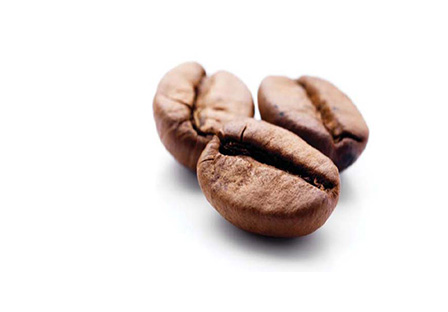Decaffeinated
Coffee is a product that has a huge success around the world. The reasons for this success are multiple and can be summarized in the following properties:
- the qualities of taste and aroma,
- the invigorating effect of the drink.
The taste and aroma of coffee are the result of roasting; in the course of this operation take place profound transformations in the composition of the product: the moisture content is greatly reduced and are formed several hundreds of soluble substances and volatile, highly aromatic, which give rise to the characteristic taste and aroma of the beverage.

The invigorating effect of the drink is linked both to its pleasantness and the temperature at which is sorbed, both to the presence of caffeine. The effects of this organism component are many and range from the improvement of reaction times to stimuli (improvement of reflexes), the focus of improvement, such an influence on sleep quality that may also be relevant.
While in most cases the demand for coffee corresponds to the desire to put up a good hot drink, invigorating and pleasant, not always physiological stimuli involved in the recruitment of caffeine are desired or required by the consumer.
These are the reasons why, since the early twentieth century, the industry has arisen of decaffeinated coffee, a product able to meet consumer demands, without the worry of unwanted physiological effects.
The decaffeination technology has become increasingly sophisticated over time, to arrive at a product that, from the point of view of the organoleptic characteristics, well stand comparison with non decaffeinated coffee.
There are different techniques used for decaffeinating coffee; all, however, provide for the following processing steps: treatment of raw coffee (not yet roasted) with a suitable solvent to extract the caffeine; coffee decaffeinated treatment with steam, to completely eliminate the solvent; final drying of coffee to bring it back to its original level of humidity
Verwerkaf is at the forefront in Italy as a decaffeination company, for the volume of processed coffee. The technology used for the coffee decaffeination involves the use of "ethyl acetate", a solvent whose characteristics ensure a very selective extraction of caffeine; this means that the raw coffee treated with ethyl acetate is almost exclusively extracted caffeine, and thus remains practically unchanged all those substances present in the grain that, with the roasting give rise to characteristic taste and aroma of the coffee.
The result is a very high quality product, whose organoleptic characteristics can be considered completely equal to those of the untreated product. The technological process is such that the solvent residues in raw decaffeinated products are reduced to an extremely low value, especially when you consider that the appropriate Decree of the Minister of Health saw no need to make an actual limit value for solvent ethyl acetate, given the substantial harmlessness to health of this product.
The Verwerkaf company still uses a solvent whose quality, in terms of purity, is established with special specifications agreed by the supplier and is certified by comprehensive tests on each batch of product purchased: it is therefore an absolutely safe product. In addition, the solvent used is already present in nature in the same green coffee. The subsequent operations of roasting, grinding and decaffeinated packaging of the product take place in a production context kept under strict control by the application of procedures, operational and analytical methods instructions, which ensure that they correspond to fixed standards.
The hygienic characteristics, in particular, are assured by the application of standards is indicated by the law 30 April 1962 n ° 283, both the 93/43 / EEC (HACCP), implemented in Italy with DL May 26, 1997 No. 155.